Although the cultural and creative sphere is one of the fastest-growing economic sectors in the world, it suffers from a severe lack of investment, according to a UNESCO report, entitled, Re|Shaping Policies for Creativity: addressing culture as a global public good, published in February, 2022.
Mila IbrahimovaUNESCO
Ten million jobs in cultural and creative industries worldwide were lost in 2020 due to the COVID-19 pandemic. And while the accelerated shift of cultural content and performances towards digital platforms is a clear trend that has emerged from the crisis, there is an urgent need to design fairer remuneration systems for artists whose content is consumed online.
WHERE DO WE STAND?
The global Gross Value Added in the cultural and creative industries contracted by US$750 billion in 2020.
A lack of funding is the number one barrier to creative collaboration
10 million jobs were lost in culture and creativity in 2020 globally
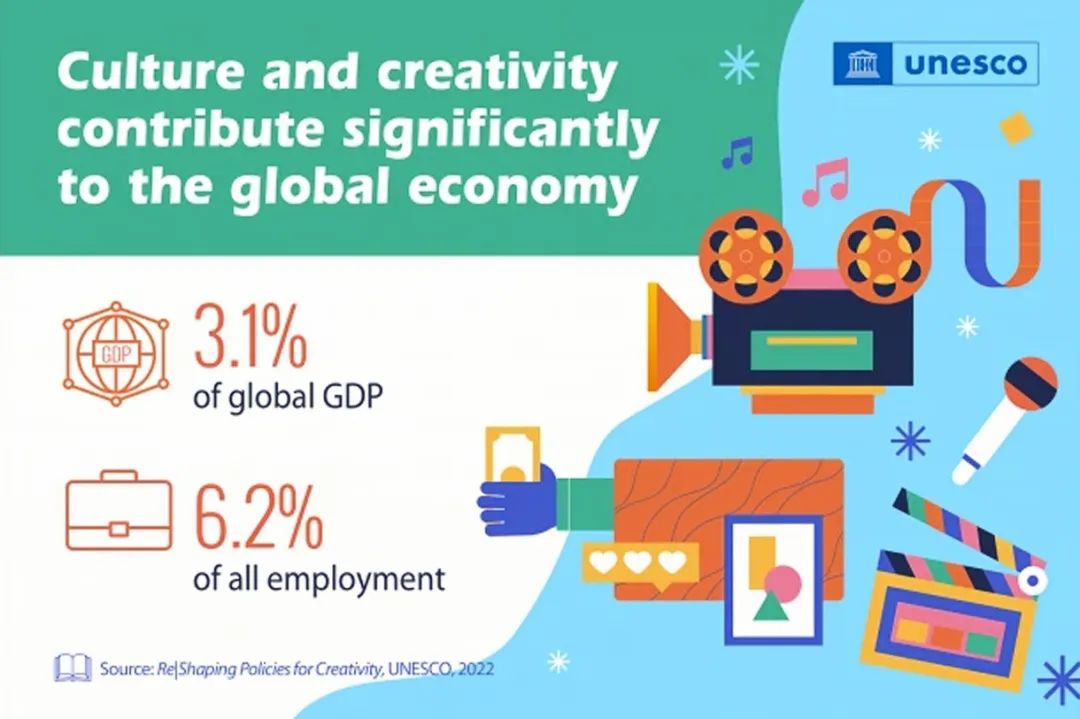
MOBILITY
Artists, especially from developing countries, face challenges in accessing funding, visa, information, training and cultural infrastructure.
The number of Mobility Information Points has increased, especially in Europe and North America.
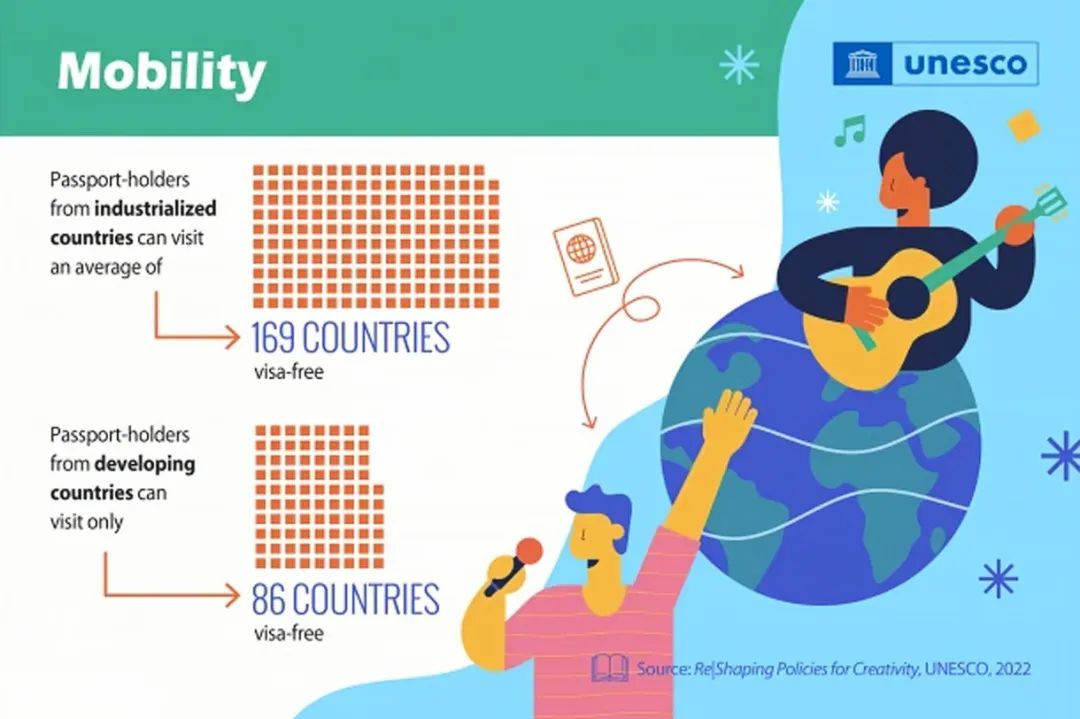
79% of international artist residencies are in Europe and North America.
South-South mobility remains difficult, in part due to poor regional connectivity.
What is next?
Re-imagine mobility in more digitally accessible and sustainable ways
Provide administrative support to artists, in addition to funding
Ensure equal representation in mobility opportunities
Improve support for intra-regional mobility among developing countries
DIVERSITY IN THE MEDIA
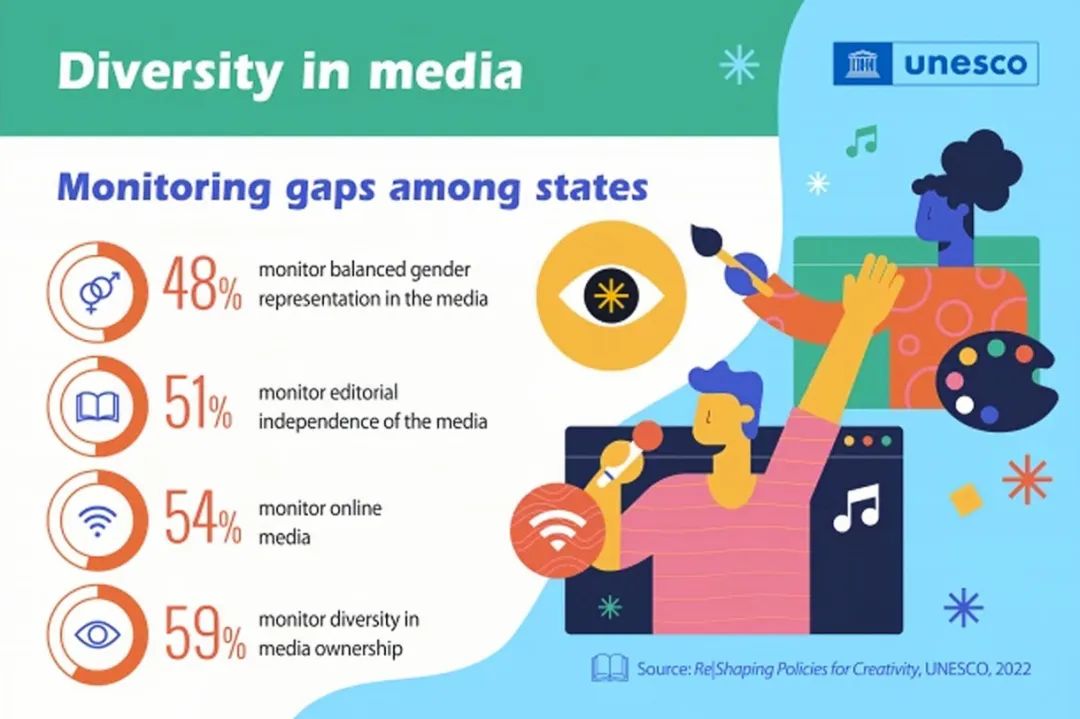
What is next?
Limit concentration of media ownership, ensure transparency and support local media outlets
Set targets for diverse representation on and off screen
Financially support local creation to enable media outlets to comply with content quotas
Invest in data collection and monitoring and evaluation of media systems
ONLINE CONTENT
Online activity exploded between 2016 and 2021:
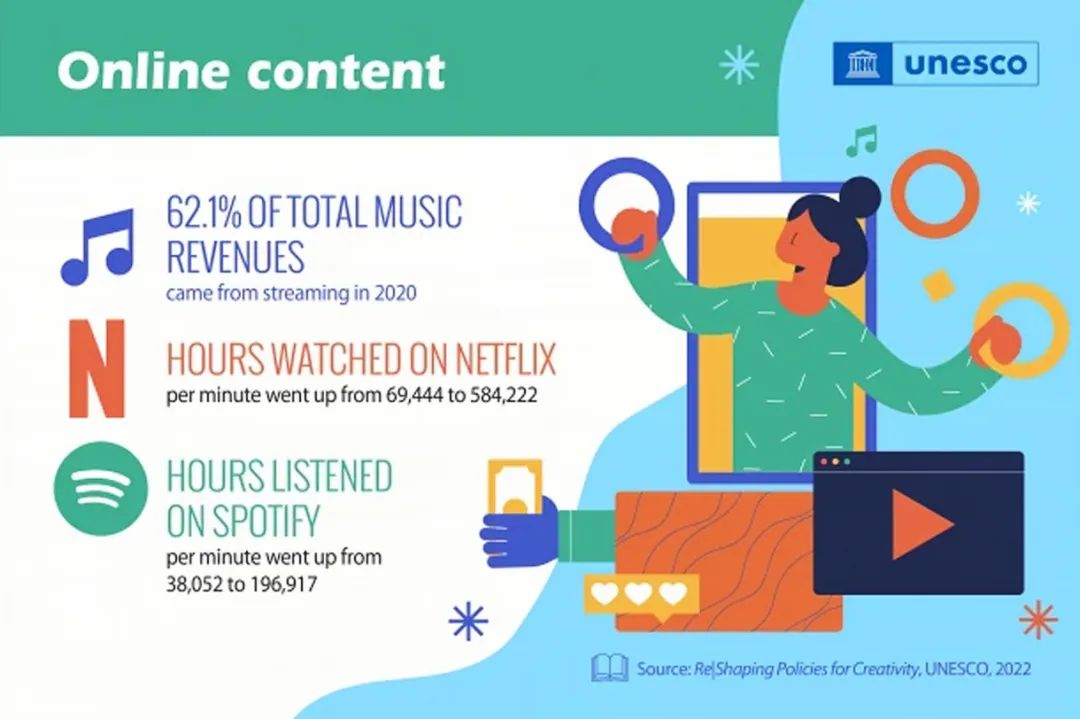
What is next?
Design business models that fairly remunerate creators online
Invest in local content and enhance its discoverability on digital platforms
GENDER EQUALITY
More women are heading up National Arts or Cultural Councils globally, but women still remain underrepresented.
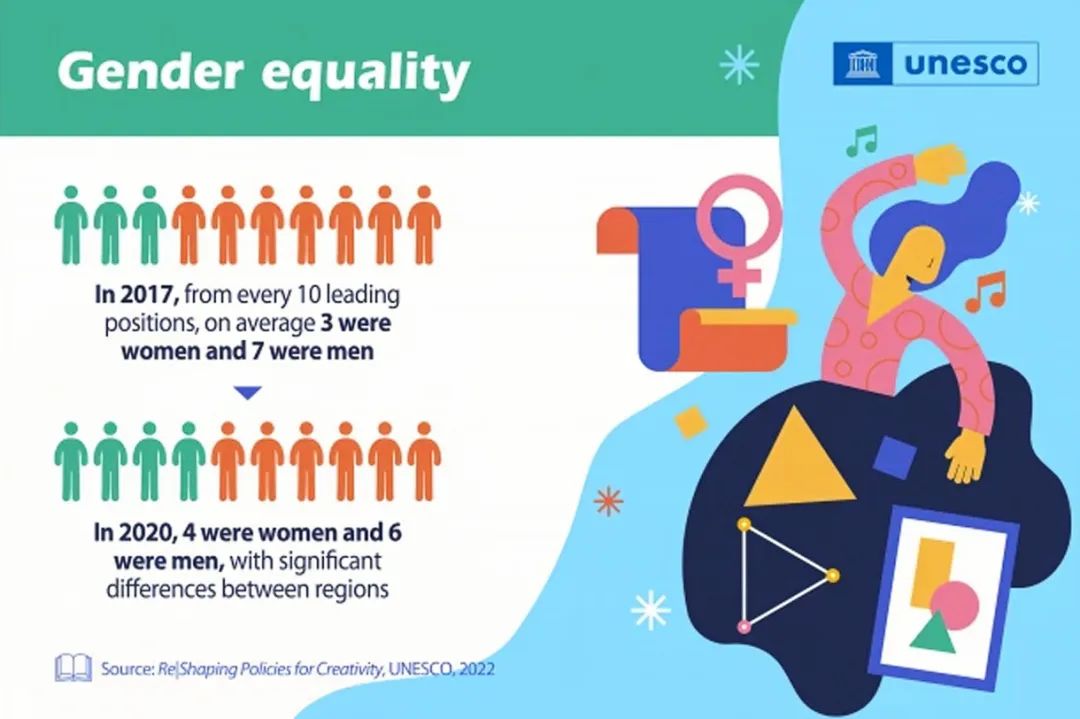
Representation of women remains low in:
32% - National art prizes, 33% - Film awards, 8% - Conductor performances, 25% - DJ performances, 30% - Gaming workforce.
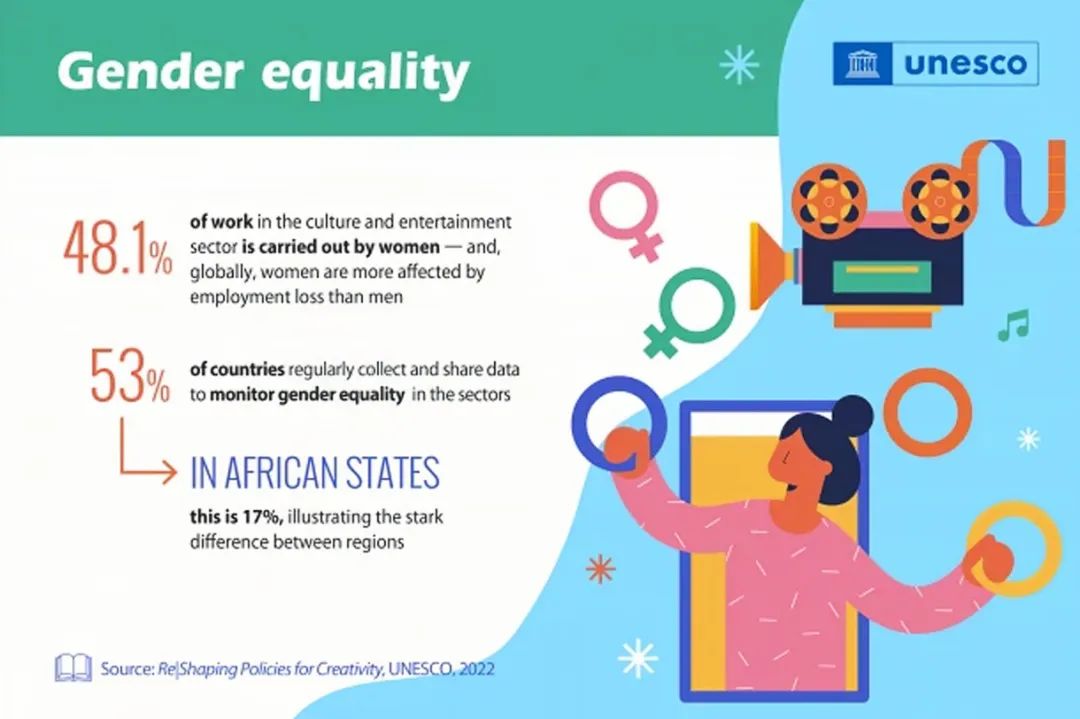
What is next?
Apply affirmative action measures in recruitment, promotion, funding and awards
Eliminate precarious labor practices in the cultural sector such as short-term contracts, long working hours and pay gaps
Make continuous efforts to measure and monitor progress towards gender equality and gender diversity
Adopt and strengthen policies and enforceable legislation for the promotion of gender equality
Source: Re|Shaping Policies for Creativity, UNESCO, 2022
©️该文章及图片版权归联合国教科文《信使》杂志所有
部分图片来自 Shutterstock